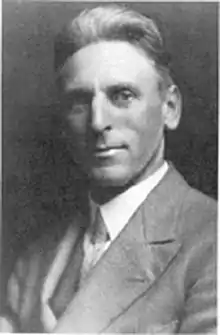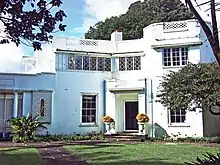William Gummer | |
|---|---|
 | |
| Born | William Henry Gummer 7 December 1884 Auckland, New Zealand |
| Died | 13 December 1966 (aged 82) Papatoetoe, New Zealand |
| Nationality | New Zealander |
| Alma mater | Royal Academy of Arts |
| Occupation | Architect |
| Children | 3 |
| Awards | NZIA gold medal (1928, 1931) |
| Practice | Gummer and Ford |
| Buildings | New Zealand National Art Gallery and Dominion Museum Dilworth Building Auckland Railway Station Remuera Public Library Stoneways |
| Projects | National War Memorial Christchurch Bridge of Remembrance Dunedin Cenotaph |
| Design | Parliament Buildings (1911; 3rd place) Auckland Civic Centre (1924; not built) |
William Henry Gummer (7 December 1884 – 13 December 1966) was a New Zealand architect.

Gummer was born in Auckland, New Zealand, in 1884.[1] He studied architecture at the Royal Academy of Arts from 1909 to 1912 and during that time worked with Edwin Lutyens in London[2] After returning to New Zealand he entered a partnership with Wellington-based firm Hoggard and Prouse, creating the firm Hoggard, Prouse and Gummer. He worked in the firm's Auckland office on High Street.[3] Hoggard left the partnership in 1921, leaving Prouse and Gummer in partnership until its dissolution 1923.[4][5] In 1924 he started the firm Gummer and Ford with Charles Reginald Ford.[2] This new partnership won many architectural competitions around New Zealand.[2]
Many of Gummer's buildings are listed with Heritage New Zealand; often they are classed as Category 1. His own house, Stoneways in Epsom, is also listed as Category 1.[6]
References
- ↑ Lochhead, Ian J. (December 2011). "William Henry Gummer". Dictionary of New Zealand Biography. Ministry for Culture and Heritage.
- 1 2 3 Taonga, New Zealand Ministry for Culture and Heritage Te Manatu. "Gummer, William Henry". www.teara.govt.nz. Retrieved 10 June 2016.
- ↑ "Obituary". Evening Post. 19 May 1936. p. 11. Retrieved 10 June 2016.
- ↑ "Page 2 Advertisements Column 5". Evening Post. 20 June 1921. p. 2. Retrieved 10 June 2016.
- ↑ "Page 2 Advertisements Column 6". Evening Post. 17 May 1923. p. 2. Retrieved 10 June 2016.
- ↑ "Stoneways". New Zealand Heritage List/Rārangi Kōrero. Heritage New Zealand. Retrieved 23 August 2020.